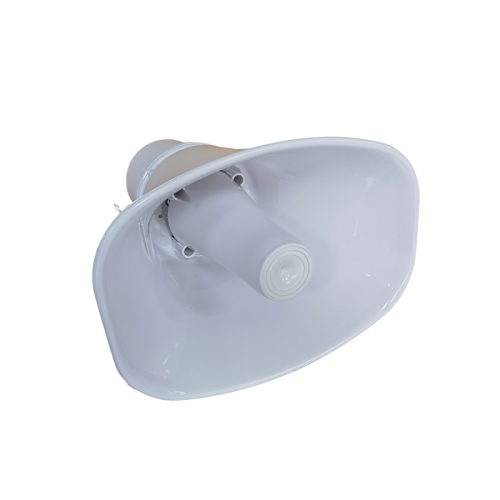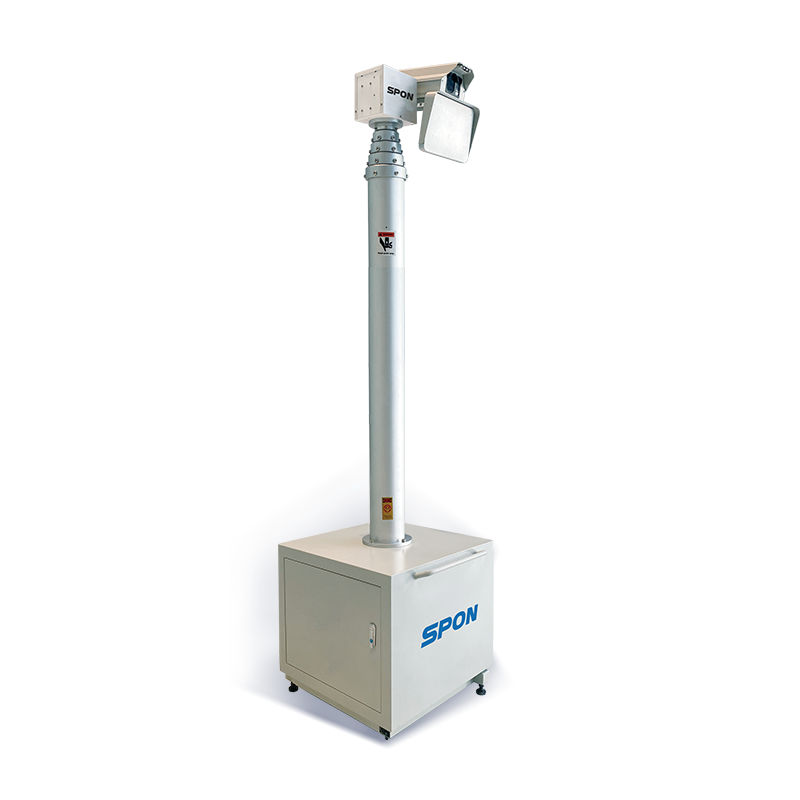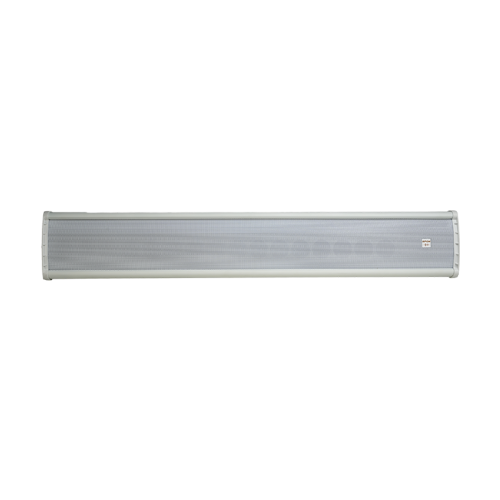Why an IP Paging System is Vital for Modern Companies
Why an IP Paging System is Vital for Modern Companies
Blog Article
Comprehensive Guide to Public Address Systems
Public address (PA) systems are frequently come across in various tasks such as office complex, residential complexes, industrial office complex, colleges, medical facilities, train terminals, airports, bus stations, financial institutions, and manufacturing facilities. This guide will offer a comprehensive overview of PA systems.
Components of a PA System
No matter the kind of PA system, it usually includes four major components: resource tools, signal boosting and handling devices, transmission lines, and speaker systems.
Source Devices
Music Athletes: Utilized for history music.
Microphones: Includes zone-select microphones and basic microphones.
Voice Storage Space Devices: For storing business and emergency situation program messages.
Signal Handling and Amplification Equipment
Audio Signal Cpu: Takes care of audio signal compensation, attenuation, equalization, etc.
Pre-Amplifier: Pre-amplifies audio signals.
Power Amplifier: Enhances audio signals to drive speakers, offering continuous voltage result.
Transmission Lines
The service administration system software application permits the monitoring center to put in centralized governance over the program and intercom interaction systems. It facilitates live gadget status monitoring, fault diagnosis, and troubleshooting, strengthening system reliability and uniformity.
Audio Speakers
Ceiling Audio Speakers: Indoor, flush-mounted in the ceiling, constant voltage or continuous insusceptibility.
Wall-Mounted Speakers: Wall-mounted, continuous voltage or constant impedance.
Column Audio Speakers: Free-standing, appropriate for interior or outside use.
Horn Audio speakers: High level of sensitivity, ideal for interior or exterior usage.
Camouflaged Audio speakers: For outdoor settings like gardens or parks, created to resemble mushrooms, rocks, or stumps.
Audio Technical Specifications of PA Equipments
In everyday environments, typical audio stress degrees are:.
Workplace noise: 50-60 dB.
Regular conversation: 65-70 dB.
Fabric factory noise: 110-120 dB.
Small quality gunfire: 130-140 dB.
Large jet aircraft sound: 150-160 dB
Signal-to-Noise Ratio (SNR)
SNR measures the proportion of the signal voltage to sound voltage, expressed in decibels. A greater SNR indicates less noise and far better audio high quality. Typically, SNR must go to the very least 63 dB, with high-fidelity audio speakers reaching over 110 dB.
Input Sensitivity
This is the minimum input voltage called for to attain the rated outcome power. Higher sensitivity means much less input signal is needed. Normally, power amplifiers have an input sensitivity of 0.775 V (0 dB) to 1.5 V (+6 dB)
Optimum Result Power (Audio Speakers)
The maximum power an audio speaker can manage in other words bursts without damage.
Rated Power (Audio Speakers)
The continuous power an audio speaker can handle without distortion, determined in watts (W) Ranked power is an average worth, and speakers can handle peak power approximately 2-3 times the rated power.

Continuous Voltage (70V or 100V)
Utilizes voltage to drive speakers, allowing longer transmission distances and numerous audio speakers in parallel. However, sound top quality is a little substandard contrasted to continuous insusceptibility systems.
Power amplifiers should match the voltage rating of the audio speakers to prevent damage.
Continuous Impedance.
Uses present to drive speakers, offering far better audio high quality yet restricted transmission range (as much as 100 meters)
Impedance matching is essential; as an example, an 8Ω amplifier should be matched with 8Ω speakers.
Choose and Configuring Speakers
Audio Speaker Option
Indoor Spaces with Ceiling: Use flush-mounted ceiling speakers without a rear cover.
Indoor Spaces with Only a Structure: Use ceiling audio speakers with rear covers or hanging ball-type audio speakers.
Outside Locations: Usage weatherproof column speakers or horn speakers.
Parks and Gardens: Use camouflaged audio speakers designed for aesthetic objectives.
High-End Interiors: Use stylish dangling audio speakers.
Fire-Safe Locations: Use fire-resistant speakers with closed layouts.
Audio Speaker Configuration
Audio speakers ought to be dispersed evenly throughout the solution location to ensure a signal-to-noise ratio of at the very least 15 dB. Common background noise levels and suggested audio speaker placement are:.
Premium workplace hallways: 48-52 dB.
Huge shopping center: 58-63 dB.
Hectic road locations: 70-75 dB.
Audio speakers need to be put to guarantee a sound pressure level of 80-85 dB in most settings. Ceiling speakers need to be spaced 5-8 meters apart, or 8-12 meters for history songs just. For emergency situation programs, make sure that no location is greater than 15 meters from the closest speaker.
Amplifier Sizing
Calculation Method:
For service and business PA systems: P= K1 × K2 × ΣPo where:.
P = Complete amplifier result power (W)
K1= Line loss payment aspect.
K2 = Aging element (1.2-1.4)
ΣPo = Total power demand.
For fire alarm system systems, make use of 1.5 times the overall number of audio speakers.
Example Calculation:
For a background music system with 10 speakers at 20W each: P= 1.26 × 1.2 × 10 × 20W × 0.7= 211W.
Last amplifier capacity should be 1.3 times this worth: 211W × 1.3= 274W
Installment Needs
Audio Speaker Positioning
Audio speakers ought to be evenly and strategically distributed to fulfill coverage and audio top quality requirements.
Power Supply
Small PA systems can make use of routine power outlets, while systems over 500W require a dedicated power supply. Power needs to be steady, with automatic voltage regulatory authorities if needed. The power supply ought to be 1.5-2 times the equipment's power intake.
Cable Television and Conduit Installment
Use copper-core wires for signal transmission. Cords ought to be secured and directed through ideal channels, staying clear of interference from electric lines. Make sure proper splitting up between power and signal lines.
Lightning Defense and Grounding
PA systems call for appropriate grounding to avoid damage from lightning and electric interference. Usage dedicated basing for equipment and ensure all basing measures meet safety criteria.
Installation High Quality
Cable and Port Top Quality
Use IP Speaker high-grade cords and adapters. Guarantee links are secure and properly matched to prevent signal loss or interference.

Keep appropriate phase alignment in between audio speakers. Usage trusted approaches for linking cables, such as incurable or soldering blocks, and secure connections from ecological damage.
Grounding and Safety And Security Checks
Validate all grounding is correctly mounted and inspect the safety of power links and devices setups. Do comprehensive examinations prior to settling the installation.
Checking and Adjustment
Examine the entire system to guarantee all elements operate correctly and satisfy style requirements. Adjust setups as required for optimum performance.
Craftsmanship Demands for Public Address Solutions
Building High Quality Requirements
The quality of building in a public address (PA) system job is crucial to meeting design specs and user demands. It is vital to strictly comply with the style strategies, adhere to standards, stay clear of rework and hold-ups, and maintain detailed building logs. Key areas to focus on consist of:
Cable Television Selection and Installment
During the construction of a PA system, focus is commonly concentrated on devices, yet the selection of transmission wires is also important for accomplishing sufficient audio quality. Premium broadcasting devices (amplifiers, speakers, and so on) is needed, but the high quality of the transmission cable televisions additionally impacts sound high quality.
Identical speaker cables have fundamental capacitance between the cables, which is not appropriate for long-distance transmission as it can attenuate high regularities and trigger uncertain or muffled high audios. Twisted pair cable televisions can efficiently overcome this concern and ought to be utilized for long-distance transmission.
Shielded twisted set cable televisions prevent electromagnetic disturbance and enhance wire toughness, making them suitable for long-distance installments. The diameter of the cable televisions additionally impacts efficiency. Thicker cables reduce transmission loss however increase expense and installation problem. The selection of cables should stabilize efficiency and cost, complying with these criteria:.
Usage balanced connections for all signal links in between PA system gadgets, with firm endpoints.
For systems with smoke alarm functions, use flame-retardant or fireproof copper-core cable televisions.
Cords should be routed with steel avenues or cable trays, and ought to not share trays with illumination or high-voltage line. Fire alarm system cable televisions need to have fire defense measures. The bending span of cords need to be no much less than 15 times the cable diameter, and power line must be divided from signal and control cords. Verify cable lengths before installment and match them to the layout drawings, lessening cable television splices. Utilize specialized ports and leave adequate cable size at both ends with clear irreversible markings. when splicing is necessary.
Attaching Speakers and Broadcast Lines
When connecting audio devices, it's vital to guarantee phase consistency in between audio speakers and program lines. Phase interference in between speakers can cause considerable variants in audio pressure levels, bring about uneven sound distribution. Adhere strictly to electrical wiring labels and standard link techniques.
3 common link techniques in systems are:.
Twisting Method: Removing insulation from wires, turning them together, and protecting them with tape or clamps. This method is straightforward yet may degrade with time.
Screw Terminal Approach: Stripping insulation and placing cables into screw terminals, then tightening up the screws. This technique is commonly used.
Soldering Method: Removing insulation, turning wires, and soldering them with each other, then covering with tape. This method is extra suitable and trustworthy for high-demand or humid atmospheres.
Despite the technique, usage tinned cable to facilitate soldering and stop corrosion. Usage PVC or steel avenue to secure exposed cords from junction boxes to speakers.
System Grounding
To lessen disturbance from the power system, different safety and functional groundings ought to be established. Suggested method is to install different copper strips for weak and strong electrical systems in their corresponding upright shafts.
The overall grounding resistance ought to not surpass 1Ω.
Building Evaluation
As a result of the complexity of systems with numerous links and elements, detailed inspection is needed. General inspections need to include:
Safety checks of tools setup.
Confirmation of power line arrangements.
Precision of discontinuations and connections.
Unique focus must be provided to tool settings, such as insusceptibility matching switches on speakers. Validate that buttons are established appropriately to prevent damage. Check the outcome choice switches on signal resource gadgets, setups on signal handling devices, amplifier linking buttons, and power supply setups.
When these steps are verified, get ready for tools debugging. Given that debugging techniques vary based on specific task needs, they are not covered thoroughly right here.
High Quality Records
Certificates, technical requirements, and documentation for speakers, units, transformers, controllers, electrical outlets, amplifiers, audio handling tools, protected wires, and so on
Pre-installation, surprise assessment, self-inspection, and mutual examination documents.
Records of layout adjustments and final drawings (IP PA System).
Quality evaluation and evaluation documents for channel and cable setup
Records of PA system setup and debugging.
Significant Installment Demands
Devices Installment Order
PA system tools is usually installed in cabinets. For less complex systems, a 1.0-meter closet could be enough. Place frequently used equipment like the major broadcast controller on top for easy accessibility. For more facility systems with a 2.0-meter cabinet, placement regularly made use of tools in between 0.8 to 1.5 meters for benefit.
Tools Connection Order
The mixer results are dispersed to each amplifier, and if using pure power amplifiers, attach to the INPUT audio input. Amplifier outcomes after that connect to addressable terminals, zone control boxes, or zone selectors, and finally to the audio speakers.
Wiring Considerations

Power Supply
Make use of a dedicated power sequencer for PA systems to make sure uniform power administration and constant gadget start-up series. The primary power supply ought to include a ground line to safeguard devices and prevent static-related threats.
Tools Selection
Do not rely solely on appearance; consider user testimonials and market reputation. Products from respectable makers with substantial screening and experience are typically extra reliable.
Wireless Microphones
For cordless microphones, pick UHF versions for better array and signal security. For mobile usage, prefer headset microphones.
Link Cords
Use strong connections for longevity and stay clear of relying upon adapters, which can create loose links in time. Properly solder links to make certain toughness and convenience of upkeep.
Cupboard Installation
If using deep power amplifiers, guarantee the cabinet measurements (e.g., 600x600mm) work with the devices. Action closet depth and spacing prior to installment.
Appropriate planning, high-grade devices, and careful installation and upkeep are vital to accomplishing ideal sound quality and reliable efficiency in a PA system.
Typically, SNR ought to be at the very least 63 dB, with high-fidelity audio speakers getting to over 110 dB.
Audio speakers must be positioned to ensure an audio stress level of 80-85 dB in a lot of settings.When connecting audio devices, it's vital to ensure stage consistency in between speakers and broadcast lines. Stage disturbance in between speakers can trigger significant variants in sound pressure degrees, leading to irregular audio circulation. Amplifier outputs after that attach to addressable terminals, area control boxes, or zone selectors, and lastly to the speakers.
Report this page